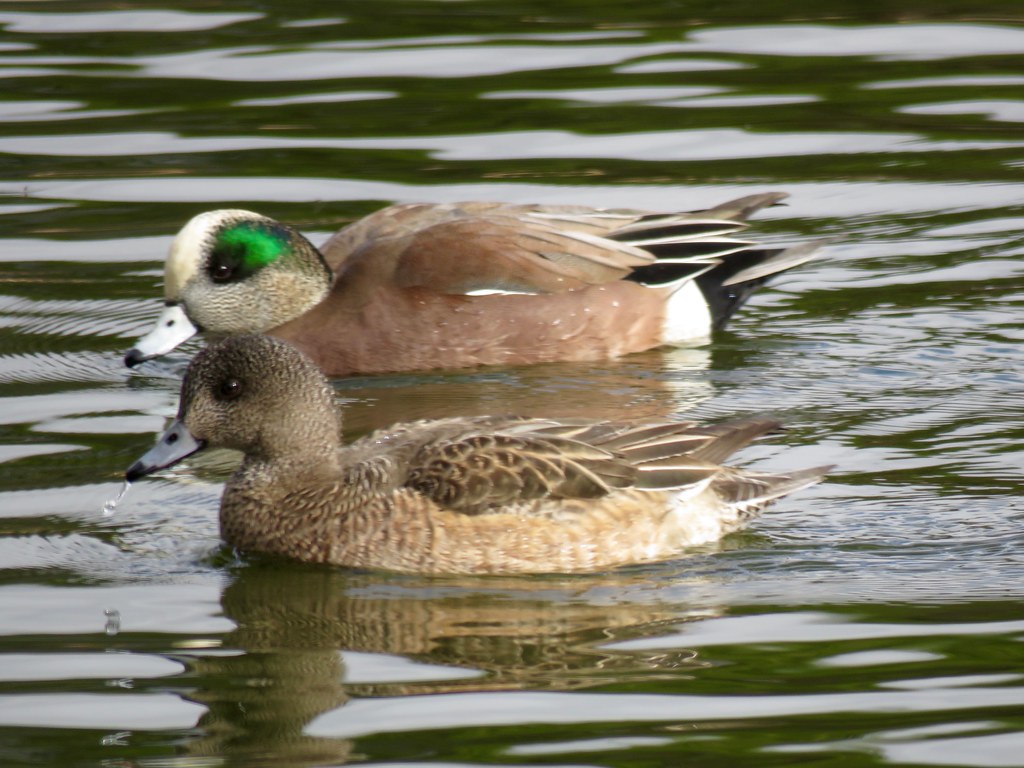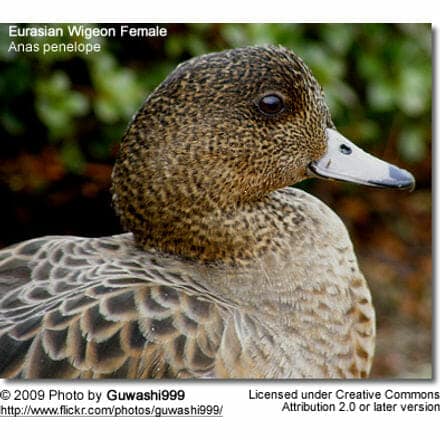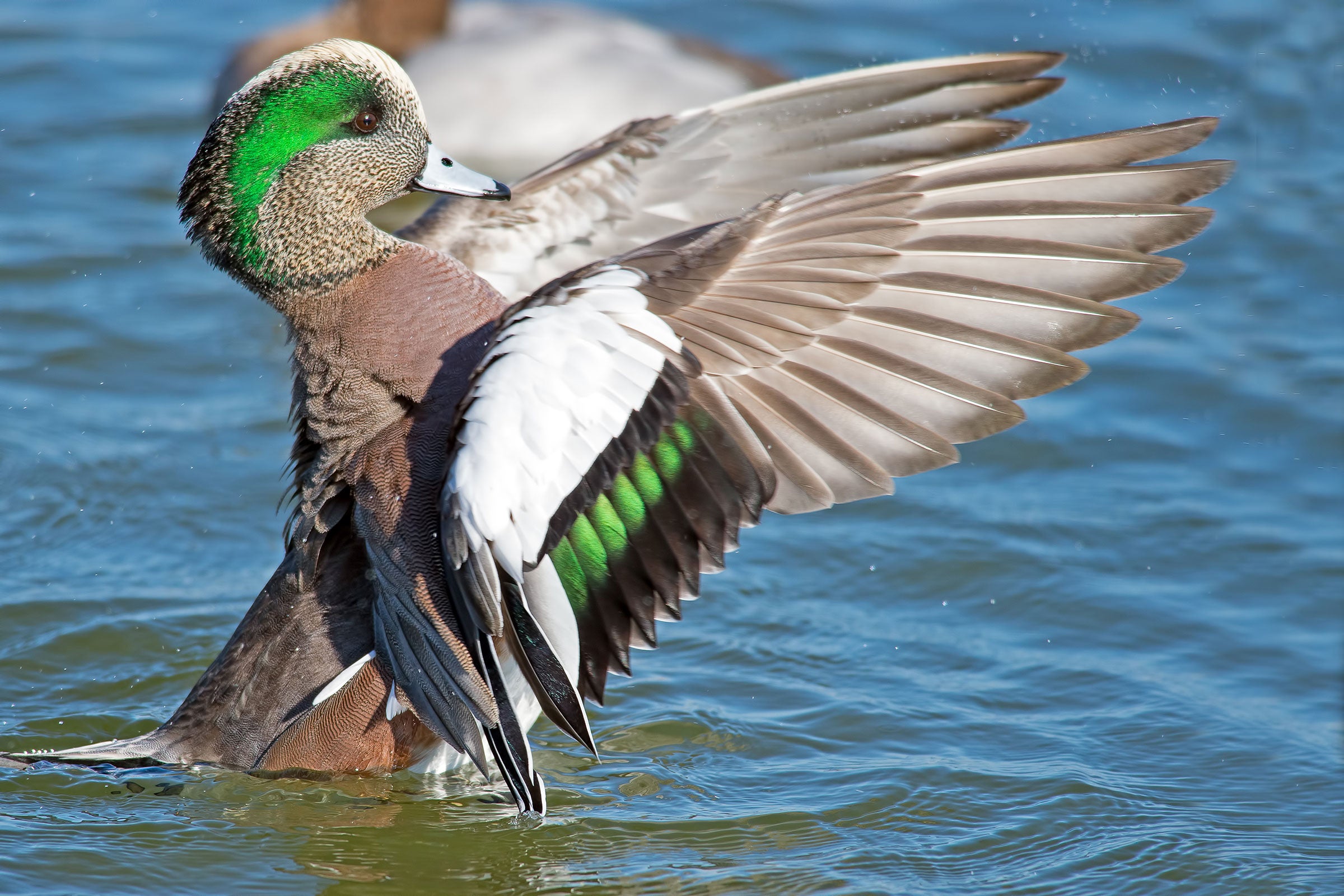Wigeons Diet, Symbolism, Habitat, and More

Wigeons are a type of duck that is found across the globe. These ducks are known for their unique physical characteristics and are often hunted for sport. In this blog post, we will explore the many facets of the wigeon species, including their diet, habitat, symbolism, migration patterns, breeding habits, physical characteristics, conservation status, predators, hunting regulations, and population trends.
Wigeon Diet
Wigeons are primarily herbivores and consume a variety of aquatic plants. They are known to feed on grasses, sedges, and pondweed, among other things. However, they are not strictly vegetarian and will occasionally eat insects and other small invertebrates.
During the winter months, when food is scarce, wigeons may also supplement their diet with seeds, berries, and agricultural crops. Their specialized bills allow them to filter out unwanted material from their food, which helps them to extract and digest the nutrients they need.
Symbolism of Wigeons

The wigeon is often associated with loyalty and fidelity. Historically, this bird was used as a symbol of love and commitment, and it was believed that couples who shared a wigeon meal would remain together forever.
In Native American folklore, the wigeon was sometimes seen as a messenger between humans and the spirit world. Some tribes believed that the bird had healing powers and would use its feathers in various rituals.
Wigeon Habitat

Wigeons can be found in a wide range of wetland habitats, including marshes, ponds, and lakes. They prefer shallow water areas with plenty of vegetation, where they can feed and nest safely.
Wigeons are adaptable birds and can survive in both freshwater and saltwater environments. During the breeding season, they may also be found in upland areas, such as grasslands and agricultural fields.
Wigeon Migration Patterns

Wigeons are migratory birds and travel long distances each year in search of suitable breeding grounds and food sources. In North America, they typically breed in the northern parts of the continent, including Alaska and Canada, and migrate southward for the winter.
Some populations of wigeons are also found in Europe and Asia, where their migration patterns may differ slightly. However, all wigeon populations are known for their impressive feats of navigation and endurance, which allow them to travel thousands of miles without getting lost or fatigued.
Wigeon Breeding Habits
During the breeding season, male wigeons will establish territories and compete for mates. They will perform elaborate courtship displays and vocalizations to attract females, who will then inspect their potential partners’ plumage and behavior before choosing a mate.
Once paired, wigeon couples will build nests together, usually on the ground or in dense vegetation near water sources. The female will lay a clutch of eggs, and both parents will take turns incubating them until they hatch.
Wigeon Physical Characteristics
Wigeons are small to medium-sized ducks that are known for their distinctive appearance. They have rounded heads with dark green patches around the eyes and white foreheads. Their bodies are mottled brown and gray, with paler underparts and black-tipped wings.
Male wigeons have a striking coloration during the breeding season, with bright rust-colored heads and creamy yellow foreheads. Females are more subdued in appearance but still have distinctive markings that set them apart from other duck species.
Conservation of Wigeons
Despite their widespread distribution, some populations of wigeons are threatened by habitat loss, pollution, and hunting pressures. Several conservation groups are working to protect these birds and their habitats by restoring wetland areas, monitoring populations, and advocating for stronger protections.
In North America, wigeons are covered under the Migratory Bird Treaty Act, which regulates their hunting and protection status. Many states also have additional regulations in place to manage wigeon populations and ensure their long-term survival.
Predators of Wigeons
Wigeons are preyed upon by a variety of animals, including foxes, raccoons, coyotes, snakes, and birds of prey. Their nests and eggs are particularly vulnerable to predation, as they are often located on or near the ground.
Despite these threats, wigeons have developed several adaptations to help them avoid predators. They are highly alert and can take off quickly if they sense danger. They also have excellent camouflage that allows them to blend in with their surroundings and avoid detection.
Wigeon Hunting Regulations
Wigeon hunting is regulated in many countries, including the United States and Canada. Hunters must obtain licenses and abide by specific hunting seasons and bag limits to prevent overharvesting and ensure sustainable populations.
Some conservation groups oppose wigeon hunting altogether, citing concerns about the impact on local populations and habitat. However, others believe that regulated hunting can be a useful tool for managing wigeon populations and promoting conservation efforts.
Wigeon Population Trends
Population trends for wigeons vary depending on the region and specific population in question. In general, some populations have experienced declines due to habitat loss, pollution, and hunting pressures, while others have remained stable or even increased in recent years.
For example, the American wigeon population has declined by an estimated 25% over the past several decades due to habitat loss and degradation. However, the Eurasian wigeon population has remained relatively stable, thanks in part to strong conservation efforts and habitat restoration programs.
Overall, continued monitoring and research are necessary to fully understand the factors contributing to wigeon population trends and to develop effective conservation strategies to protect these unique and important bird species.
Conclusion
Wigeons are fascinating birds with a rich history and cultural significance. Their unique physical characteristics, adaptable habitats, and impressive migration patterns make them a beloved species among birdwatchers and nature enthusiasts.
However, their populations face significant threats from habitat loss, pollution, and hunting pressures. To ensure their long-term survival, it is essential that we continue to monitor and protect wigeon populations and their habitats through conservation efforts, research, and education.
By learning more about these remarkable birds and the challenges they face, we can work together to ensure that future generations can enjoy the beauty and wonder of wigeons for years to come.